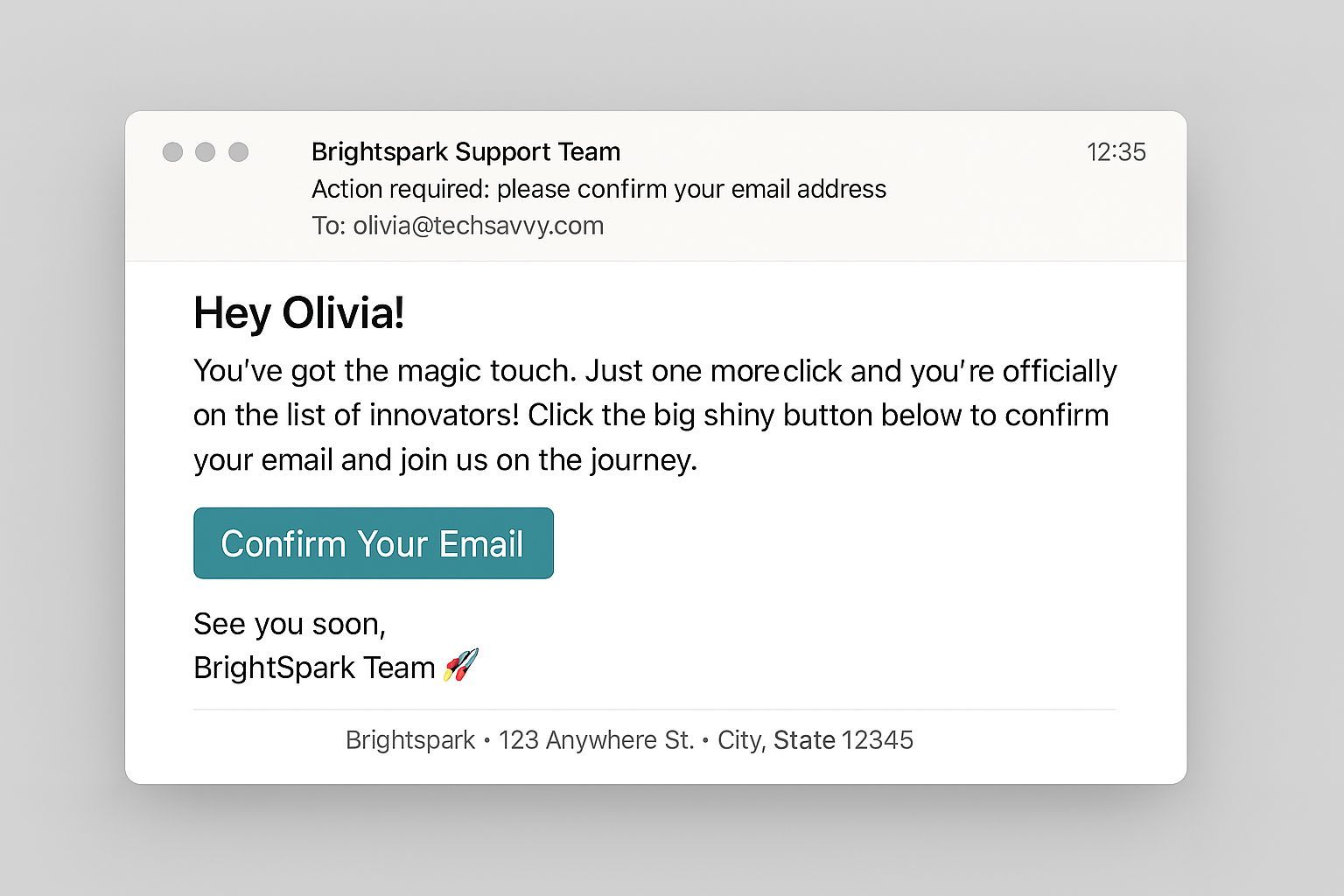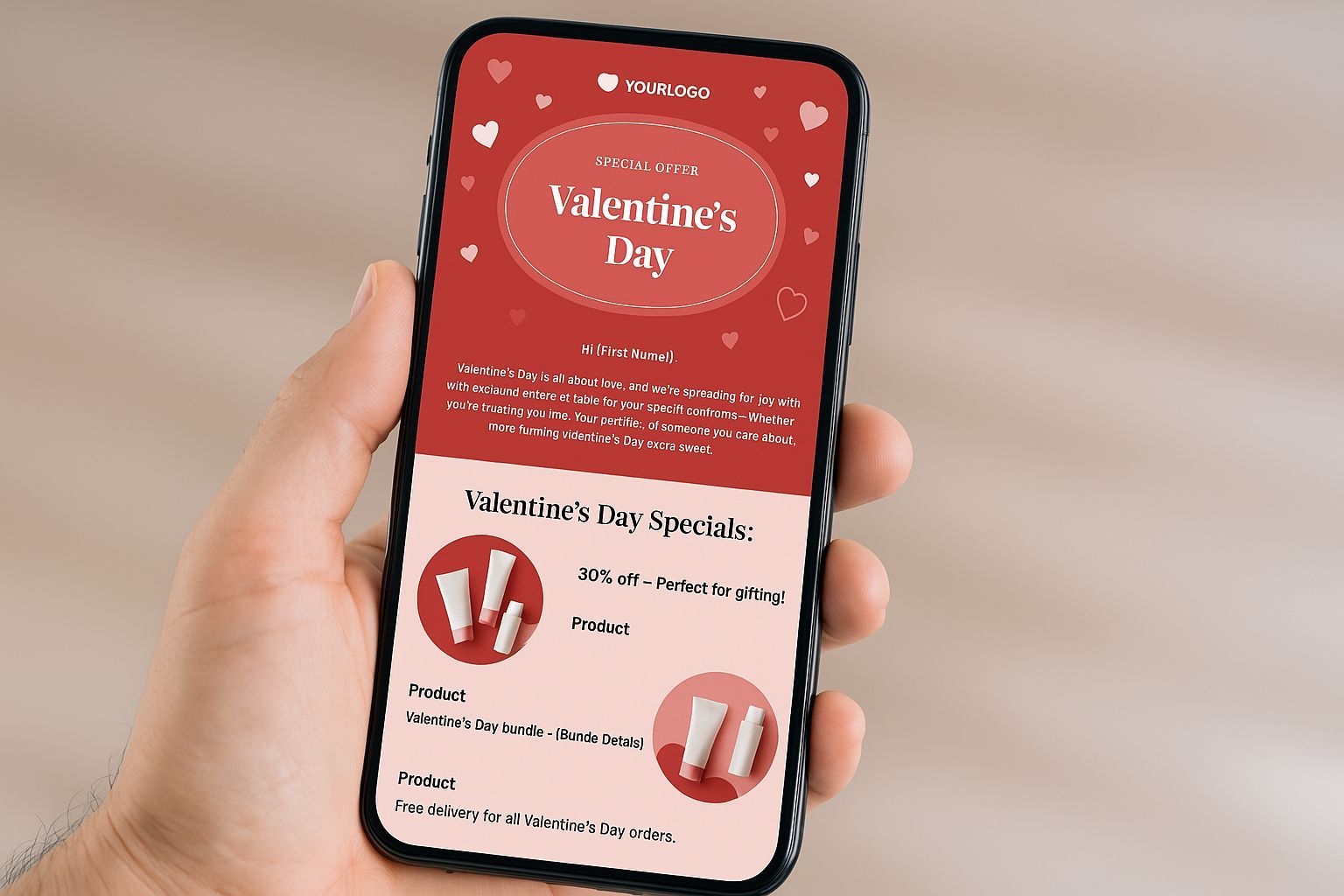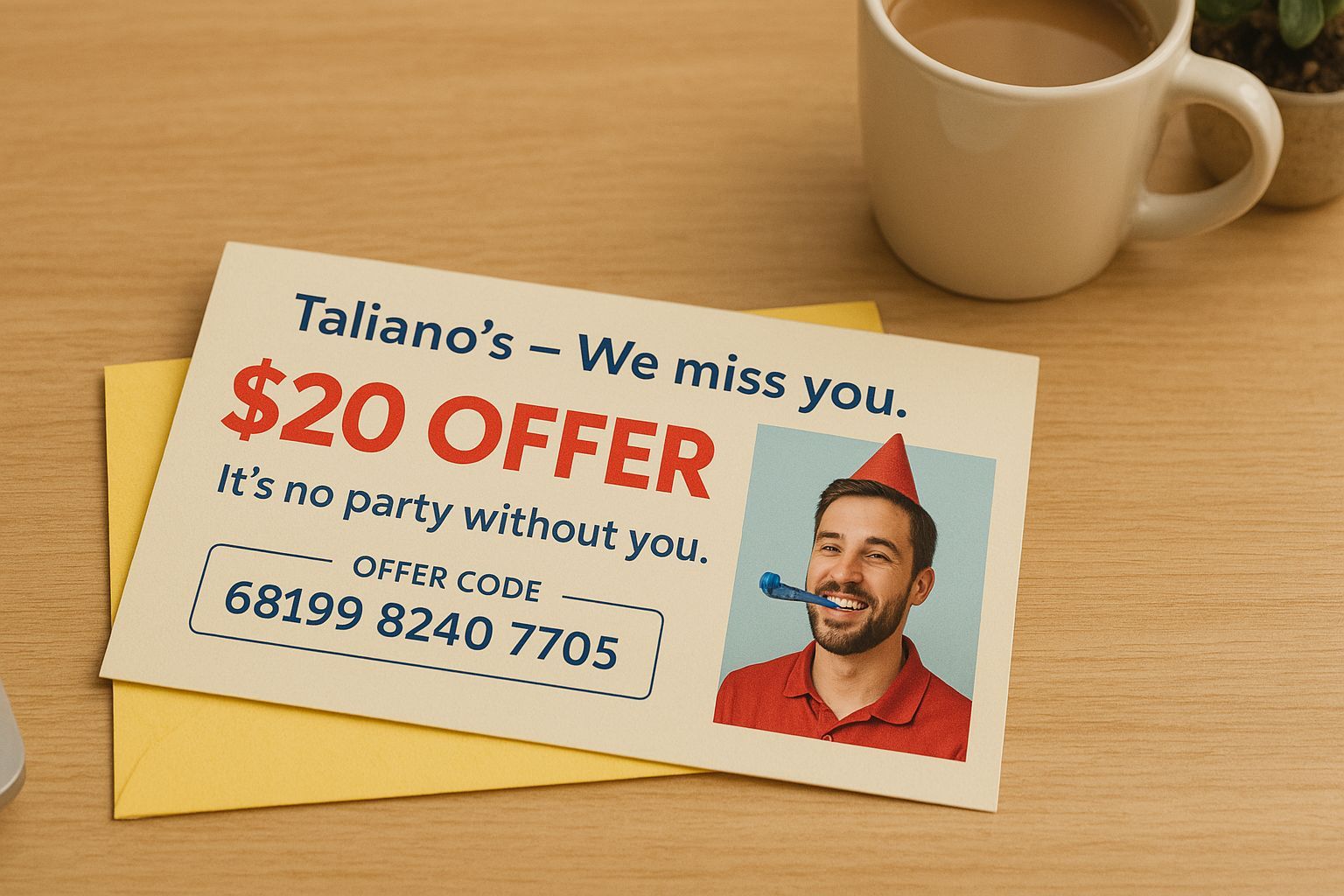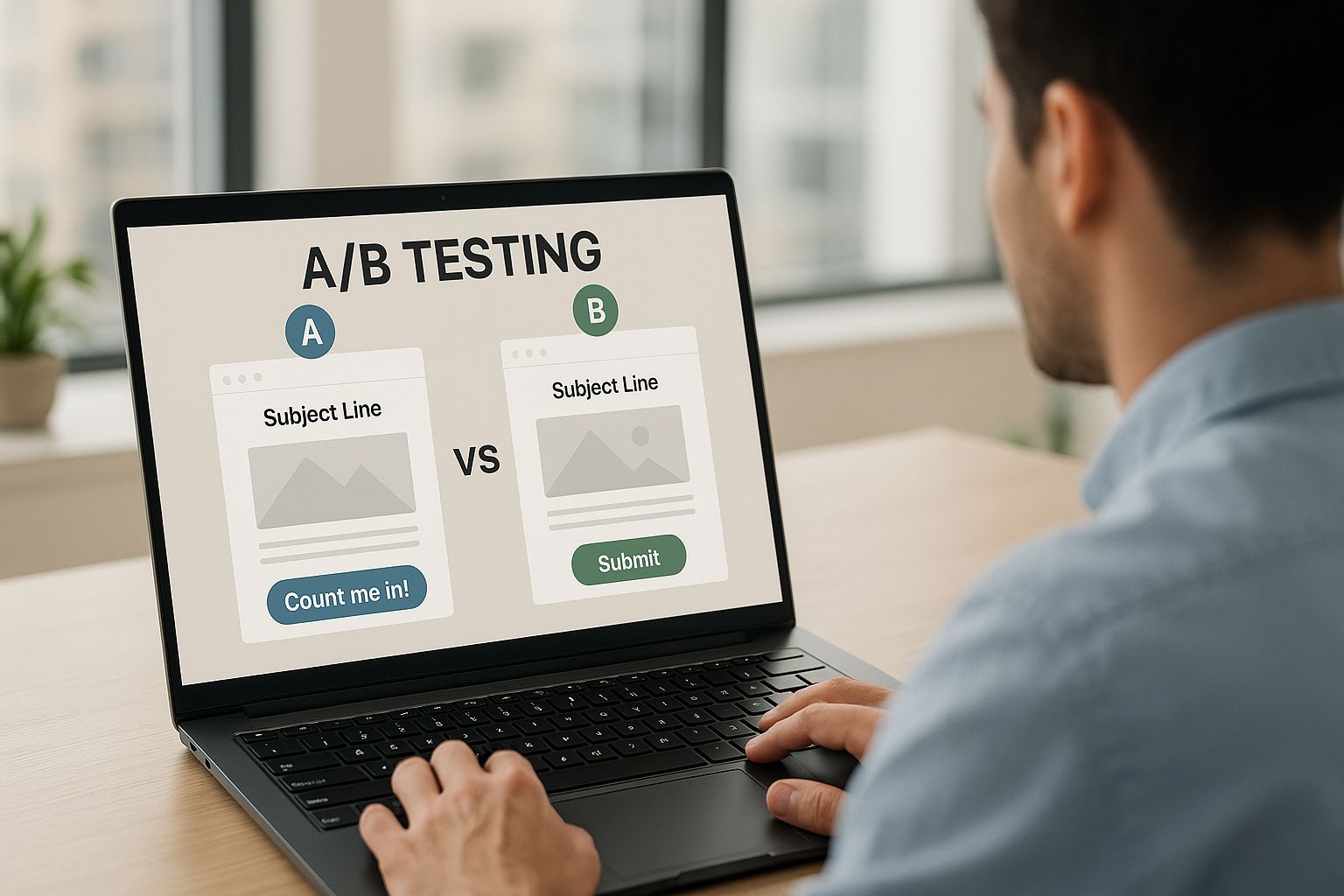Contents
the email tool that makes email marketing simple
Email Marketing Best Practices - How to Create Effective Email Campaigns
Published: May 27, 2025
Email marketing is one of the smartest ways to reach your audience. On average, every dollar spent returns $36, making it one of the highest-return marketing tools available.
However, simply flooding people's inboxes won’t cut it anymore. Your subscribers are busy, their inboxes are crowded, and they’re quick to tune out anything irrelevant. So, how do you ensure your emails get noticed and inspire action?
By using proven best practices.
This means sending emails that subscribers want to open, read, and click. You're aiming to build trust, be helpful, and know your audience inside out.
In the following sections, you'll discover practical tips to take your email campaigns to the next level. You’ll learn how to grow a quality email list, craft messages your subscribers care about, pick the perfect sending times, and ensure your emails reach inboxes – not spam folders.
Whether you're just getting started or refining existing campaigns, these straightforward tips will help you connect better, stand out more clearly, and achieve measurable results from every email you send.
Build a Permission-Based Email List
Building a high-quality email list begins with permission. This means every subscriber actively chooses to hear from you, ensuring your emails are always welcome in their inboxes.
Start by adding simple, inviting sign-up forms to your website, blog, or social media channels. Tell visitors what they'll receive – newsletters, promotional offers, or helpful updates – and how often you'll send emails. This transparency will attract people who care about your content, setting clear expectations from Day One.
Avoid shortcuts like purchasing email lists or adding contacts without consent. Sending emails to people who didn't opt-in can quickly backfire, leading to spam complaints, poor engagement, and even legal trouble.
Instead, encourage sign-ups by offering valuable incentives. A discount code, a helpful e-book, or exclusive tips can motivate visitors to join your mailing list. Keep your forms easy to find and quick to complete, and only ask for the information you need. Usually, just an email address is enough to get started.
Consider using a double opt-in process, where new subscribers confirm their email address through a link you send immediately after sign-up. While this adds an extra step, it ensures every new subscriber is real, interested, and engaged. It reduces fake addresses, reduces bounced emails, and keeps you compliant with anti-spam laws.
Once your list starts growing, maintain it regularly. Consistently remove invalid email addresses that bounce and periodically check for inactive subscribers. For those who haven't engaged in a while, send a friendly re-engagement email asking if they'd still like to hear from you – or offer them a special reason to reconnect. If they remain quiet, remove them from your main list.
By consistently managing your subscriber list, you'll improve deliverability, increase engagement, and ensure you're reaching people who value your messages.
For more detailed information, check out our article on how to build an email list.
Segment and Personalize Your Campaigns
Segmenting your emails involves sending the right message to the right person every single time. Instead of using a one-size-fits-all approach, segmentation breaks your subscriber list into smaller, targeted groups. Each group receives content that matches their interests, behavior, or background.
You might segment your audience by location, age, purchase history, or recent interactions with your emails or website. For example, recent customers could receive a special thank-you offer, while new subscribers might get helpful tips about your service.
Even basic segmentation—like dividing your audience into new subscribers and long-term customers—can significantly boost your results. More than half of marketers report higher open rates when they segment emails.

Personalization goes naturally with segmentation. At a minimum, personalize emails by including the subscriber’s first name in the greeting or subject line. This is simple but effective, making the email feel personal and relevant.
However, you can—and should—go further. Use insights you've gathered to recommend products or content based on what subscribers previously clicked on, purchased, or showed interest in. If someone attended your webinar on SEO, why not send them a related guide to content marketing? Personalization like this makes subscribers feel like each email was crafted specifically for them, improving engagement and building loyalty.
Keep these practical ideas in mind as you personalize and segment your campaigns:
- Use the information from sign-ups to segment immediately. If subscribers indicate specific interests (like product updates, sales, or educational content), ensure they get exactly that content.
- Pay attention to subscriber behavior. For example, create segments based on who clicks discounts most often and prioritize sending special offers their way.
- Personalize beyond just using the subscriber’s name. Mention past purchases ("We hope you're enjoying your new shoes!") or their location ("Hello from our Chicago team to our customers in Seattle!"). Just make sure your data is accurate and doesn’t feel intrusive.
- Lastly, always test and refine your segments. Track how each group reacts to different emails, content types, or sending frequencies. This insight helps you continuously improve your strategy, ensuring every subscriber feels valued and engaged.
Read More:
Email List Segmentation Best Practices – Constant Contact Blog
Write Compelling Subject Lines
Your subject line is your best—and sometimes your only—shot at grabbing a subscriber’s attention. In crowded inboxes, a good subject line can mean the difference between your email being opened or ignored.
Keep subject lines short, clear, and interesting. Ideally, stay between 30–50 characters, so your message doesn't get cut off – especially on mobile. Make your first few words count, placing key ideas right at the front. Instead of something generic like “Our Monthly Newsletter – Updates and Tips,” try “Monthly Tips & Updates: What's New for April?” Clearly showing what’s inside or sparking curiosity helps subscribers click.
Here are some practical ways to improve your subject lines:
Summarize the main point or offer briefly.
Personalize when possible. Using a subscriber’s name or referencing something specific (“Anna, enjoy 15% off just for you”) can boost open rates.
Include numbers or facts to catch the eye. Subject lines like “7 Ways to Grow Your Business” or “Save 30% on Spring Styles” stand out and show value.
Create urgency or exclusivity. Limited-time offers or exclusive invites (“⏰ 48-Hour Flash Sale,” or “Exclusive Early Access Just for You”) give subscribers a reason to open your email immediately.
Careful use of emojis or playful language can make your subject stand out – but keep it appropriate for your audience and brand. Avoid writing in all caps or using excessive punctuation. This can look spammy and harm deliverability.
Steer clear of overly salesy or spam-like phrases (“Free money!”, “Act Now!”, “Guaranteed Results!”), which can trigger spam filters and annoy subscribers. Instead, keep your tone conversational and genuine.
Your preview text is just as important as your subject line. It's the snippet of text appearing alongside or beneath your subject in inboxes. Don’t waste this valuable space with generic phrases like “Trouble viewing? Click here.” Instead, use preview text to complement your subject line, offering subscribers another reason to open your email. For example, if your subject line announces, “Introducing Our Summer Collection!”, your preview text could say something like, “Get your exclusive first look and a special subscriber discount.” This combination gives readers an intriguing peek into what awaits them. When your subject line and preview text work together, subscribers can’t help but notice your email. This simple yet strategic step will set your emails apart and significantly increase your chances of getting opened in a busy inbox.
Read More:
How to write the best Subject Lines
Deliver Value in the Email Content
Getting someone to open your email is a win, but it’s just the start. The content inside must live up to your subject line’s promise. Great email content is something subscribers either want or need. Your emails should answer one simple question from the reader’s perspective: “What’s in it for me?” Whether it’s useful information, a special deal, helpful tips, or an important update, make the benefit immediately clear.
Here’s how to create emails that subscribers enjoy reading (and responding to):
Start with the important stuff. People skim emails, so put your main message right at the top. If your reader sees immediate value, they’ll keep reading. Use an attention-grabbing headline or bold text to emphasize your key point.
Write like you’re talking directly to someone you know. Keep your tone friendly, conversational, and approachable. Using “you” makes your emails feel personal and relatable. Ditch the jargon and write naturally – like you would speak.
Keep it short and easy to scan. Huge paragraphs feel overwhelming and cause readers to tune out. Break your content into short, simple paragraphs or easy-to-read bullet points. Bold important phrases or add subheadings so readers can quickly grasp your main points.
Show the benefit. Each email should offer real value – like knowledge, entertainment, exclusive deals, or solutions to a common problem. Instead of saying, “We've launched a new product,” try something like, “Our new product will save you hours each week.” Always highlight the reason your reader should care.
Include an obvious call to action (CTA). Your email should make it crystal clear what you want subscribers to do next – like shop a sale, sign up for a webinar, or download a resource. Use buttons or action-focused links like “Shop Now” or “Download Your Guide.” Even if your email includes multiple links, focus on one main action to avoid overwhelming your readers.
Use images to reinforce your message, but keep it balanced. Images can communicate faster than words and add visual appeal. Choose pictures that support your content, but avoid going overboard. Too many images or oversized graphics may trigger spam filters or appear as blank spaces. Always add descriptive alt text so your message gets across even if images don't load or if subscribers use screen readers.
Stay consistent with your branding. Readers should immediately recognize your emails. Consistent colors, logos, design elements, and content types build trust and brand recognition. Deliver what subscribers expect. If they signed up for monthly tips, ensure that's exactly what they get.
Lastly, proofread and test everything before hitting send. Typos or broken links undermine your credibility. Send yourself a test email first. Click every link, check that the formatting is clean, and ensure it looks great on both desktop and mobile.
By delivering engaging and valuable emails every single time, subscribers will look forward to your messages and, more importantly, take action.
For more tips on crafting compelling email content, read our article on how to write an effective email.
Design for Clarity and Mobile Optimization
Great email content is useless if your subscribers struggle to read it. Good design matters – a lot. It makes your email easier to skim, enjoyable to look at, and, most importantly, easy to act on.
Today, about 55% of emails are opened on mobile phones. Nearly half of people will immediately delete an email if it doesn’t display properly on their mobile screen. So, if your emails only look great on desktop, you're missing out big-time.
Here’s how you ensure your email design is clear, attractive, and mobile-friendly:
Always Use a Responsive Template
Pick email layouts that automatically adjust to fit any screen size. Most email platforms offer responsive templates that do the heavy lifting for you. Single-column designs work especially well because they’re easy to scroll through, no matter the device.
Keep It Simple and Focused
Clutter is your enemy. Each email should have a clear purpose and a neat layout with plenty of white space. If you're featuring multiple items (like different products or blog posts), briefly highlight each and then link out clearly (“Read More” or “View Details”) rather than stuffing too much into the email itself.
Make Your Text Easy to Read
Use fonts large enough to easily read on phones – around 14px for regular text and 18-22px for headlines. Stick to simple, web-friendly fonts. Dark text on a light background offers the best readability. Be cautious with white text on dark backgrounds, especially for longer sections.
Optimize Your Images for Speed
Big images slow emails down and frustrate readers – especially those on slower mobile networks. Compress images to load quickly. Remember, never rely solely on images to deliver your message. Some people block images, so make sure key information is provided in text or alt-text, too.
Make Your CTAs Unmissable
Your call-to-action buttons should jump out immediately. Choose bright, contrasting colors for buttons, and make sure they're easy to tap with a thumb. There should be no tiny links or closely spaced buttons. Give clickable areas enough padding to avoid accidental taps.
Test Across Devices and Platforms
Before you hit send, preview your email everywhere you can: smartphones, tablets, and desktop clients like Gmail and Outlook. Send test emails to yourself and colleagues to catch formatting glitches like odd spacing or misaligned images. If you can, use testing tools that preview how emails appear in multiple apps at once. It’s worth the effort!
When you design emails that look great everywhere, subscribers will read what you've created, and they'll happily take the action you’re hoping for.
Read More:
How to Use Responsive Templates
Send at the Right Time and Frequency
When you send your emails can make or break their success. Timing impacts whether subscribers open your message immediately – or miss it entirely.
While there's no magic formula, there are patterns worth following. Mid-week emails (Tuesday, Wednesday, Thursday) typically earn higher open rates, especially around late morning or early afternoon. On the flip side, emails sent on Friday evening (when minds drift to weekend plans) tend to perform poorly. For more insights, check out the best time to send marketing emails.
However, your audience is unique, so timing should match their routines. Here’s how you nail down the best send time:
Put yourself in your subscribers’ shoes. Are they busy professionals who check email during their coffee break? Or maybe consumers who catch up after dinner or on weekends? Review your data (past email reports or website activity) to spot patterns in subscriber behavior.
Think about time zones. If your audience spans multiple regions, send emails at the right local time rather than blasting everyone at once. Many email tools offer a "send in local time zone" feature, ensuring your message lands comfortably in everyone’s inbox at, say, 10 AM their time instead of 2 AM.
Test and refine. Split your list occasionally (A/B testing) and try different send times. You might discover surprising engagement – like higher clicks on a Sunday evening or more opens at 6 AM versus 6 PM. Let the data guide you.
How frequently you email subscribers is just as critical as the timing. Too many emails, and subscribers will tune out or unsubscribe. Too few, and they might forget about you completely.
When subscribers sign up, set clear expectations upfront (“You’ll receive a monthly newsletter and occasional special offers”). Stick to your promises. If you decide to email more often, let subscribers know ahead of time, or even better, let them choose their preferred frequency.
Watch for signals: declining open rates or fewer clicks could mean subscribers feel overwhelmed. Prioritize quality over quantity. One great email each week beats three mediocre ones. Many successful email marketers choose a regular weekly or biweekly schedule, with occasional special announcements mixed in.
Giving subscribers control can also help. Allow them to adjust how often they hear from you. Some might want every update, while others prefer fewer messages. Offering that flexibility keeps everyone happier and more engaged.
Send a Warm Welcome and Onboard New Subscribers
When someone joins your email list, your first message to them is incredibly important. Think of it as the digital equivalent of a warm handshake or a friendly introduction. It sets the tone for the entire relationship.
Welcome emails have the highest open rates of any email type because people are genuinely excited when they first sign up. Eight out of 10 subscribers expect a welcome email right away. If you skip this step, you're missing a golden opportunity to make a memorable first impression.
Here’s how to create a welcome email that will connect meaningfully with your new subscribers:
Send Immediately
Automate your welcome email so it arrives right after sign-up - within minutes, if possible. Subscribers feel more connected when the experience feels immediate. Plus, they're more likely to remember who you are and why they subscribed.
Introduce Yourself
Use this first email as a chance to introduce your brand briefly. A friendly greeting from your founder or a simple explanation of your mission can make the connection personal and memorable. Think of this email as a short, inviting conversation - not a lecture.
- Deliver What You Promised (And Maybe a Little Extra)
If your sign-up form promises a discount, free guide, or special perk, include it upfront. Didn’t promise anything? Consider a small, unexpected gift like a 10% discount or a valuable resource as a surprise thank-you. Little gestures like these create lasting goodwill. - Set Clear Expectations (and Highlight Benefits)
Tell your subscribers what to expect: how often you'll email, what kind of content you'll send, and why it’s worth staying subscribed. For example, “Every week, you'll get insider tips, industry news, and exclusive deals.” If subscribers can choose their preferences, mention that here. - Showcase Your Best Stuff
Give your subscribers an immediate taste of what they'll get from your emails. Share your most popular blog posts, top-selling products, or best resources. Choose something relevant based on what you already know about their interests, so they'll be eager to click and explore. - Include Social Proof
Early trust matters, so include a bit of credibility-building content. Share a quick testimonial, mention how many subscribers you have (“Join 25,000 others!”), or encourage them to follow you on social media. It reassures subscribers they've made the right choice. - Invite Engagement
Give your new subscriber a reason to interact right away. Make a simple request (“Hit reply and tell us what you're most interested in!”), suggest they visit your social pages, or direct them to a useful guide on your site. Getting them involved from Day One will keep them interested long-term. - Try Extending the Welcome into a Series of Emails Sent Over a Week or Two. For instance, the first email welcomes and thanks them, the second email provides deeper insights into your offerings, and the third might feature inspiring customer stories or invite them to complete their profile. Each email in the series should have a purpose, building on the last without repeating content.
- Your Welcome Emails Should Make New Subscribers Feel Valued. A friendly, well-crafted introduction helps transform a curious subscriber into a loyal, engaged customer.
Read More: 16 welcome email examples + best practices for long-term engagement – Mailerlite Blog
Re-engage or Remove Inactive Subscribers
No matter how great your emails are, some subscribers eventually tune out. They stop opening or clicking, and suddenly you're emailing into silence. Sending messages to unresponsive subscribers can hurt your overall performance and sender reputation. So it’s smart—and necessary—to regularly re-engage your inactive subscribers or let them go.
Start by defining what “inactive” means for your list. Maybe it’s anyone who hasn't opened or clicked in six months or perhaps subscribers who've ignored your last 10 emails. Most email platforms have tools to spot these quiet subscribers.
Next, launch a re-engagement campaign. Keep it simple, honest, and clear. Use subject lines like “We miss you, Sarah!” or “Still want to hear from us?” Directly acknowledge their inactivity and offer them an easy way back in. Include a button or link that lets them confirm their interest in just one click.
Sometimes, all people need is a reminder of why they subscribed in the first place. Highlight recent emails they missed (“Here’s what you’ve missed lately ...”) or offer a special incentive, like a unique discount or exclusive resource. You might also give them an option to adjust email frequency or select the type of content they'd prefer. Maybe they’re overwhelmed by weekly emails but would happily open a monthly summary instead.
If subscribers still don’t respond after your re-engagement attempt, it’s best to remove or suppress them from your main email list. This might feel strange; after all, you worked hard to build your subscriber base. However, smaller, more active lists boost your email marketing results.
By focusing only on engaged subscribers, your open rates and click-through rates will increase. Email providers like Gmail notice these healthy engagement signals and reward you with better inbox placement. Plus, regularly cleaning your list saves money. Many email services charge based on your list size, and there’s no sense in paying for subscribers who aren’t interested.
Lastly, removing inactive subscribers is respectful and privacy-friendly. If people aren't responding, it’s polite to stop emailing them. You can always reconnect with them later through retargeting ads or new offers if their interest returns.
Keeping your email list active, engaged, and interested is essential for long-term success – and it’s easier than you think.
Read More:
10 Proven Strategies to Re-Engage Inactive Email Subscribers (Drip Blog)
Test and Optimize Your Emails
Even the best email marketers know there's always room for improvement because no two audiences are exactly alike. Testing is how you discover exactly what your subscribers love and what makes them click delete.
A/B testing (also called split testing) is one of your most valuable tools. It involves sending two slightly different versions of an email to see which performs better. By regularly testing, you move beyond guessing and start making decisions based on real data.
You can test just about anything: subject lines, sender names, email design, button colors, images vs. text-only, long versus short copy, personalization, or the best days and times to send. Test only one change at a time to see what made the difference.
Here’s how to test your emails effectively:
- Set a clear goal.
Decide which metric matters most for your test. Are you aiming to boost opens (test subject lines or sender names), clicks (test buttons, images, or content layout), or conversions (test landing pages or special offers)? - Test one thing at a time.
If you change too many variables at once, you won’t know which tweak was effective. Keep everything identical except the single element you're testing. - Use a large enough audience.
Your test groups should be large enough to provide reliable insights. If you have a smaller list, consider spreading the test over multiple campaigns or use automated systems that send each version to a small group first, then automatically use the winning version for the rest of your list. - Run tests at the same time.
Send both versions simultaneously (or as close as possible). Sending one email Monday and another Tuesday could skew results due to timing. - Apply what you learn.
When one version wins, use that knowledge moving forward. Did personalized subject lines perform better? Make that your new standard. Did shorter emails boost clicks? Simplify future emails accordingly. Small improvements add up significantly over time. - Never stop testing.
Audience preferences can shift, and new subscribers may behave differently. Continual testing helps you stay ahead and keeps your emails relevant.
With testing, your emails evolve from educated guesses to proven successes. Every test helps you refine your approach, ultimately making your email marketing stronger, smarter, and more effective.
Read More: How to Optimize Your Email Campaigns (Digital Marketing Institute)
Track Key Metrics and Refine Your Strategy
Great email marketing isn’t guesswork – it’s guided by data. Every email you send offers valuable clues about what your subscribers enjoy and what they ignore. Paying close attention to your analytics helps you sharpen your approach and improve your email strategy over time.
Here are the essential email metrics to watch and practical ways to use each one:
Open Rate
This shows how many people opened your email, giving you insights into the effectiveness of your subject line and sender reputation. Lower-than-average opens might mean your subject line didn’t stand out or your emails landed in spam folders. Experiment with different subject lines or send times to boost opens. Just remember that open rates can be skewed by privacy settings or blocked images – but they're still a helpful benchmark.
Click-Through Rate (CTR)
CTR tells you how engaging your content is. If subscribers open but don’t click, your email probably isn’t delivering on its promise, or your CTA isn’t clear enough. Try making your CTA buttons more prominent, adjusting your layout, or offering more compelling content.
Conversion Rate
If your email has a specific goal—like making a purchase, filling out a form, or signing up for something—the conversion rate tracks how many people completed that action. It’s the ultimate measure of success. Low conversions mean your email or landing page might need fine-tuning to motivate subscribers.
Bounce Rate
Bounces indicate emails that couldn’t be delivered. “Hard bounces” (permanently undeliverable) should be removed from your list immediately, while “soft bounces” (temporary issues) usually resolve themselves. Keeping bounce rates low protects your sender reputation. So, regularly clean your list and use methods like double opt-in to prevent invalid addresses.
Unsubscribe Rate
Some unsubscribes are normal, but sudden spikes can signal problems. High unsubscribe rates often result from sending irrelevant content, emailing too frequently, or not meeting subscriber expectations. Review any email that causes many unsubscribes and adjust your approach to retain subscribers.
Spam Complaint Rate
Spam complaints happen when subscribers mark your emails as spam. Even a tiny increase here is cause for concern. It usually means people didn’t fully opt in, your content feels spammy, or your frequency is overwhelming. Stay below a complaint rate of 0.1% (1 in 1,000), make unsubscribe options clear, and send content that subscribers expect.
For a deeper dive, check out our guide to email marketing metrics.
Once you have this data, use it strategically. Don’t obsess over one email; rather, look for patterns over time. If open rates start dipping consistently, it might be a sign of list fatigue. If certain topics or styles always get higher clicks, double down on them.
Segment performance can also guide your decisions. If one group consistently outperforms another, consider customizing your content more closely or even pruning your list to focus resources where they’ll matter most.
Using an email marketing tool can simplify this process by offering real-time insights, automated reports, and A/B testing to help you make data-driven decisions faster.
Additionally, your email service provider plays a key role in deliverability and reporting. Choose one that gives you the metrics you need while supporting compliance and scalability.
Regularly review overall results, too, like total sales or site traffic driven by emails each month. This big-picture view helps you to prove your ROI and spot seasonal trends.
Think of email marketing as a continuous loop: send → measure → learn → adjust → improve. Over time, this simple data-driven cycle helps you craft emails your subscribers look forward to – and drives increasingly better results for your business.
Read More:
How to Track Email Performance Metrics in Maildroppa
Ensure Deliverability and Stay Compliant
Great emails don’t matter if they never reach your subscribers' inboxes. Deliverability is the art of getting your emails into inboxes, not spam folders, and it's critical. Good deliverability goes hand-in-hand with compliance. When you follow email laws and best practices, inbox providers reward you by delivering your messages consistently. And since email remains a top-performing marketing channel, strong deliverability is essential for long-term success.
Here’s how you maximize deliverability and stay on the right side of regulations:
Send from a Trusted Domain and Address
Use a consistent, recognizable sender address, like newsletter@yourbrand.com. Email providers trust steady, familiar senders. Avoid "no-reply" addresses. They discourage interaction and can hurt deliverability. Instead, use a friendly name people recognize and trust.
Gradually Increase Email Volume ("Warm-Up")
If you’re new or haven’t sent emails in a while, start slow. Don’t blast your entire list at once. Gradually increase your sending volume. ISPs grow suspicious when new senders suddenly flood inboxes. Warming up your sender reputation helps your emails reach inboxes instead of spam folders.
Watch Your Sender Reputation
Your reputation determines if your emails land in inboxes or spam. High bounce rates, spam complaints, or low engagement hurt your reputation. Regularly remove inactive subscribers and invalid emails, and deliver content your subscribers want. Good engagement naturally boosts your sender reputation.
Avoid Spammy Practices
Certain tactics trigger spam filters immediately: Excessive punctuation (!!!), ALL CAPS subject lines, misleading phrases ("free money," "act now!"), or hidden text tricks. Keep your emails natural, conversational, and valuable to avoid spam triggers.
Make It Easy to Unsubscribe
Always include a clear, easy-to-find unsubscribe link. Let subscribers leave gracefully rather than marking you as spam. Making it difficult to unsubscribe annoys recipients and hurts your reputation, so respect their wishes.
Include Your Physical Address
Most email regulations require your emails to include a physical postal address. It reassures subscribers that you're legitimate, transparent, and accountable. It's also mandatory by law in many jurisdictions.
Only Email People Who've Opted In
Never buy or scrape email addresses. Instead, always get explicit permission. Sending unsolicited emails can land you in trouble legally and damage your sender reputation. Stick to opt-ins and avoid shortcuts.
Respect Privacy and Data Requests
If subscribers request their data or ask you to delete it, promptly respect these rights, especially in regions governed by laws like GDPR. This builds trust and shows your commitment to subscriber privacy.
Stay Transparent and Honest
Represent your emails and offers clearly. Avoid misleading subject lines or deceptive content. Transparency builds trust, reduces complaints, and boosts your deliverability.
Following these steps might seem like extra effort, but they pay off. Whether you send an email to one person or one thousand, doing it right ensures better inbox placement, happier subscribers, and a stronger sender reputation. It’s the difference between emails that get ignored and ones that consistently drive results.
Read More:
- How to Verify Your Sender Email and Domain (DKIM) in Maildroppa
- CAN-SPAM Compliance Guide for Email Marketing
Conclusion
Email marketing is still one of the best ways to build relationships with your audience. Done well, it's personal, valuable, and incredibly effective. But great email marketing isn’t random – it’s thoughtful and intentional.
By following the tips in this guide—like building your list with permission, segmenting subscribers, crafting compelling content, and optimizing deliverability—you'll set yourself up for success with your email marketing campaigns.
Yet, email marketing is never finished. It evolves, shaped by what your audience responds to most. Stay curious about your subscribers. Pay attention to their behavior. Test new ideas regularly, track your results, and use those insights to keep improving. The best marketers learn, adapt, and continually refine their approach.
Above all, prioritize your subscribers' experience. Respect their inbox, send them valuable content, and listen when they respond (or don’t!). If you do this consistently, you’ll earn their loyalty and achieve better opens, clicks, and conversions.
In short, email marketing isn’t about sending as many emails as possible. It's about sending the right emails to the right people at exactly the right time. Keep refining, learning, and growing – and your results will steadily improve.







